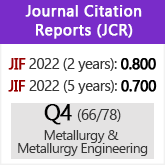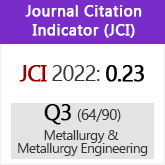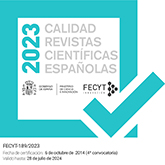Changes in the morphology of porous anodic films formed on aluminium in natural and artificial ageing
DOI:
https://doi.org/10.3989/revmetalm.2003.v39.iExtra.1105Keywords:
Anodized aluminium, Sealing, Ageing, Transmission electron microscopy, Electrochemical impedance spectroscopyAbstract
Transmission electron microscopy and electrochemical impedance spectroscopy are used to demonstrate that the water retained in porous anodic aluminium oxide films is the main reason for their reactivity under electron beam irradiation in the TEM, accelerated ageing in an oven at 100 °C, or natural ageing over months and years in an outdoor atmosphere. Though the kinetics in each medium is highly different, there is a clear similarity between the structural and physical-chemical transformations that take place. Unsealed layers, practically free of water, hardly change their structure under the effect of electron beams and show the same impedance plots after hours at 100 °C or after years at environmental temperature in dry atmospheres.
Downloads
Download data is not yet available.
Downloads
Published
2003-12-17
How to Cite
López, V., Otero, E., Bautista, A., Escudero, E., & González, J. A. (2003). Changes in the morphology of porous anodic films formed on aluminium in natural and artificial ageing. Revista De Metalurgia, 39(Extra), 104–109. https://doi.org/10.3989/revmetalm.2003.v39.iExtra.1105
Issue
Section
Articles
License
Copyright (c) 2003 Consejo Superior de Investigaciones Científicas (CSIC)

This work is licensed under a Creative Commons Attribution 4.0 International License.
© CSIC. Manuscripts published in both the printed and online versions of this Journal are the property of Consejo Superior de Investigaciones Científicas, and quoting this source is a requirement for any partial or full reproduction.All contents of this electronic edition, except where otherwise noted, are distributed under a “Creative Commons Attribution 4.0 International” (CC BY 4.0) License. You may read here the basic information and the legal text of the license. The indication of the CC BY 4.0 License must be expressly stated in this way when necessary.
Self-archiving in repositories, personal webpages or similar, of any version other than the published by the Editor, is not allowed.

















